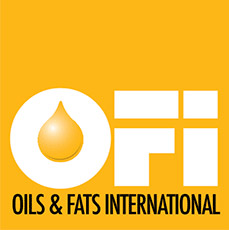The extreme versatility of our Hydrotherm® ensures the production of oils or fats with virtually any characteristics required.
Improve melting properties
Hydrogenation is an oils and fats modification process.It is mainly used on vegetable oils like soya, rape, cotton or sunflower to increase their oxidative stability and to improve their melting properties by reducing their degree of unsaturation. As a result, these oils or fats reach a consistency that is ideal for use as margarine or shortening components.
Stable high-quality oils
It is also possible to hydrogenate soyabean oil and fish oil and then to winterise or fractionate them for the production of very stable high-quality salad oils. Hydrogenation is a reaction involving the use of a catalyst, most generally nickel, and is also an exothermic reaction. For each iodine value unit drop, the oil temperature increases by 1.6 – 1.7°C. This heat is generally recovered to supply the factory low pressure steam headers.
Perfect mixing
Careful and precise hydrogenation requires that the constituents – oil or fat, gaseous hydrogen and solid catalyst – should be mixed perfectly. This is done in a closed vessel – the hydrogenator – by agitation of the catalyst – fatty material suspension in contact with hydrogen. The purpose of agitation is to promote hydrogen absorption and to maintain a permanent flow of fatty material through the pores of the catalyst. To do this, we use the so-called "dead-end" hydrogenator, in which hydrogen is forced into the oil and remains in it until the gas is fully consumed.
The dead-end hydrogenator is semi-continuous. It is equipped with several features to control and master reaction pressure, reaction temperature and the quantity and flow of hydrogen injected, all of which are essential to guarantee selective hydrogenation. The feedstock used for hydrogenation is usually caustic refined and bleached oil. With the improvement of degumming processes, there is a tendency to hydrogenate degummed oils. After hardening, those oils are bleached and physically refined.
Oils for hydrogenation must respond to the following quality requirements.
Free fatty acids: < 0.05%
Soaps: < 25 ppm
Phosphorus: < 2 ppm
Moisture: < 0.05%
Peroxide value: < 0.5 meq/kg
p-Anisidine value: < 10
Selectivity
Selectivity is a determining criterion in the reaction as the saturation of the double bonds must not take place at random but according to a specific pattern.
Selectivity is more than a single concept :
- Selectivity (S1) is high when multiple unsaturation in the fatty acid chains is preferentially eliminated and the formation of saturated acids reduced to a minimum.
- Triglyceride selectivity is high when the attack on the fatty acid groups in the triglycerides is at random, that is as if they react as independent molecules. It is low when the attack of the 3 fatty acids in a triglyceride is correlated. Then S3 > s3 , where S is the stearic acid concentration.
- Specific isomerisation. In any catalytic hydrogenation, isomerisation takes place. The number of trans double bonds formed per double bond eliminated is a measure of the degree of isomerisation.
Hydrotherm Main Advantages |
|
|
|

